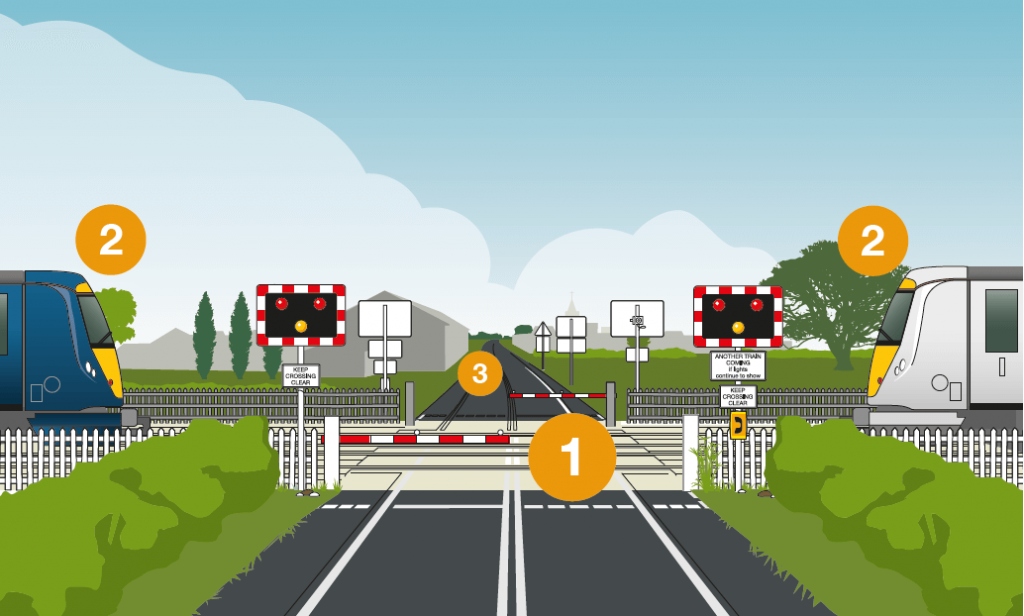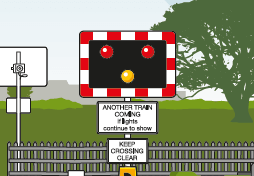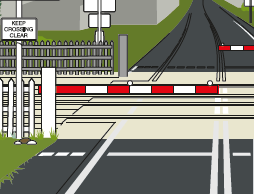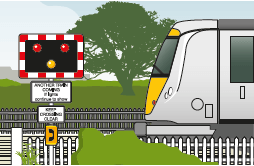Level crossings for drivers
How to use level crossings safely as a driver
As drivers we need to:
- Be prepared to stop at the crossing.
- Understand the warnings (lights, barriers, alarms). Download level crossings for drivers (pdf) or view the guide below.
- If the warnings activate, stop – unless it’s unsafe to do so.
- Remain stationary until all the warnings stop.
- Check that our exit is clear before driving across.

We also need to understand the potential dangers:
1. TEMPTATION
It’s tempting to jump the lights or race around the barriers. Don’t do it – you’re putting lives at risk.
2. ASSUMPTION
Don’t assume there is only one train or use previous experience to guess when the train is coming. Trains can come from either direction at any time.
3. BLOCKED EXIT
It is surprisingly easy to end up stationary on the tracks – make sure your exit is clear before driving onto the crossing.
Understanding the safety systems used at level crossings
Level crossings enable us to cross the railway safely. Each is unique with differences in how often trains run, and the local geography. It’s particularly useful to understand the safety systems used at crossings:

Warning lights
- The majority of road crossings have amber and red warning lights.
- We must stop when the amber lights come on, unless our vehicle has already crossed the stop line.
- We must stop when the red lights flash.
- We need to remain stationary until the lights stop flashing – there may be more than one train.
- A few crossings have red and green lights. We must only cross when the green lights are showing.

Barriers
- Some crossings are ‘open’ and don’t have barriers, some have a ‘full barrier’ which blocks the entire road, whilst others have a ‘half barrier.’
- We need to remain stationary until the barriers are fully raised – there may be more than one train.

Road Markings
- Crossings will usually have a white stop line. We must stop before this line if the warning lights come on or the barrier descends.
- Some crossings have yellow box markings to emphasise the need to make sure our exit is clear before driving across.

How long until the train actually arrives?
- As users, we can never be sure! There is no set amount of time from a warning activating to the train arriving and there may be more than one train.